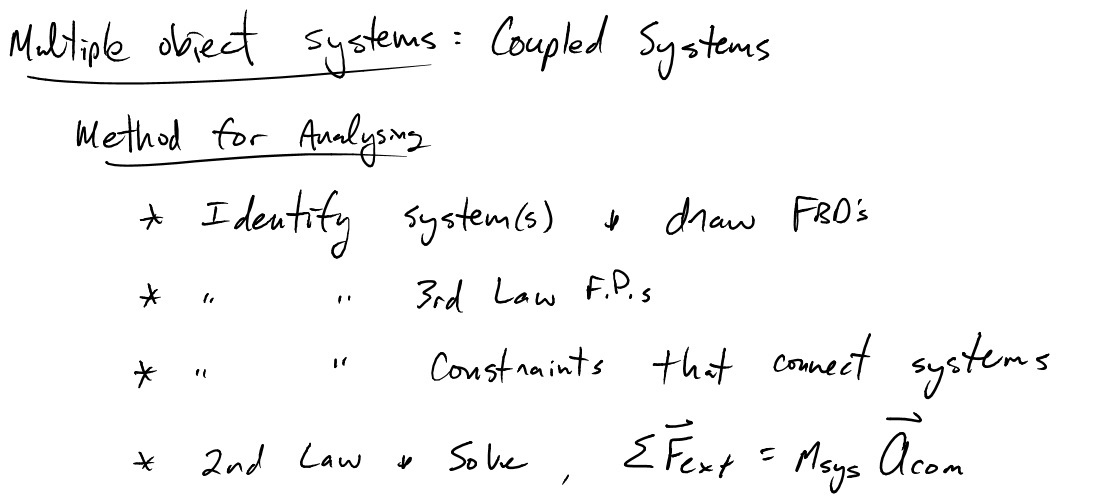
If any two objects are somehow interacting then you have a coupled system. When this is the case, it is important to identify what are the force pairs, if any, that are present in our free body diagrams. To do this;
-
Look for forces on the two FBDs that are of the same type
-
Of those forces, look for ones that point in the opposite direction
-
Use the notation convention that the two subscripts on a force represent the agent on the object, with the object always the second subscript. Check the subscripts of the two force you wish to determine are F.P.s. If one is the opposite of the other, such as FAB and the other is FBA, then, with all three conditions, you have a force pair.
Remember, a force pair can never be on a single FBD. The next thing to do is to look at the constratints that are present.
-
Look for forces that are not force pairs, but might still have the same magnitude such as a tension force from a rope connecting two objects.
-
Identify if the motion of the two objects are related. For example, if object A falls then object B slides to the left.
-
Determine how the motion of the two are related. For example, if object A falls 2m object B will move 1m.
-
Set the rest of the kinematic variables equal to this relation. For example, if xA = 2 xB then vA = 2vB and aA = 2 aB.